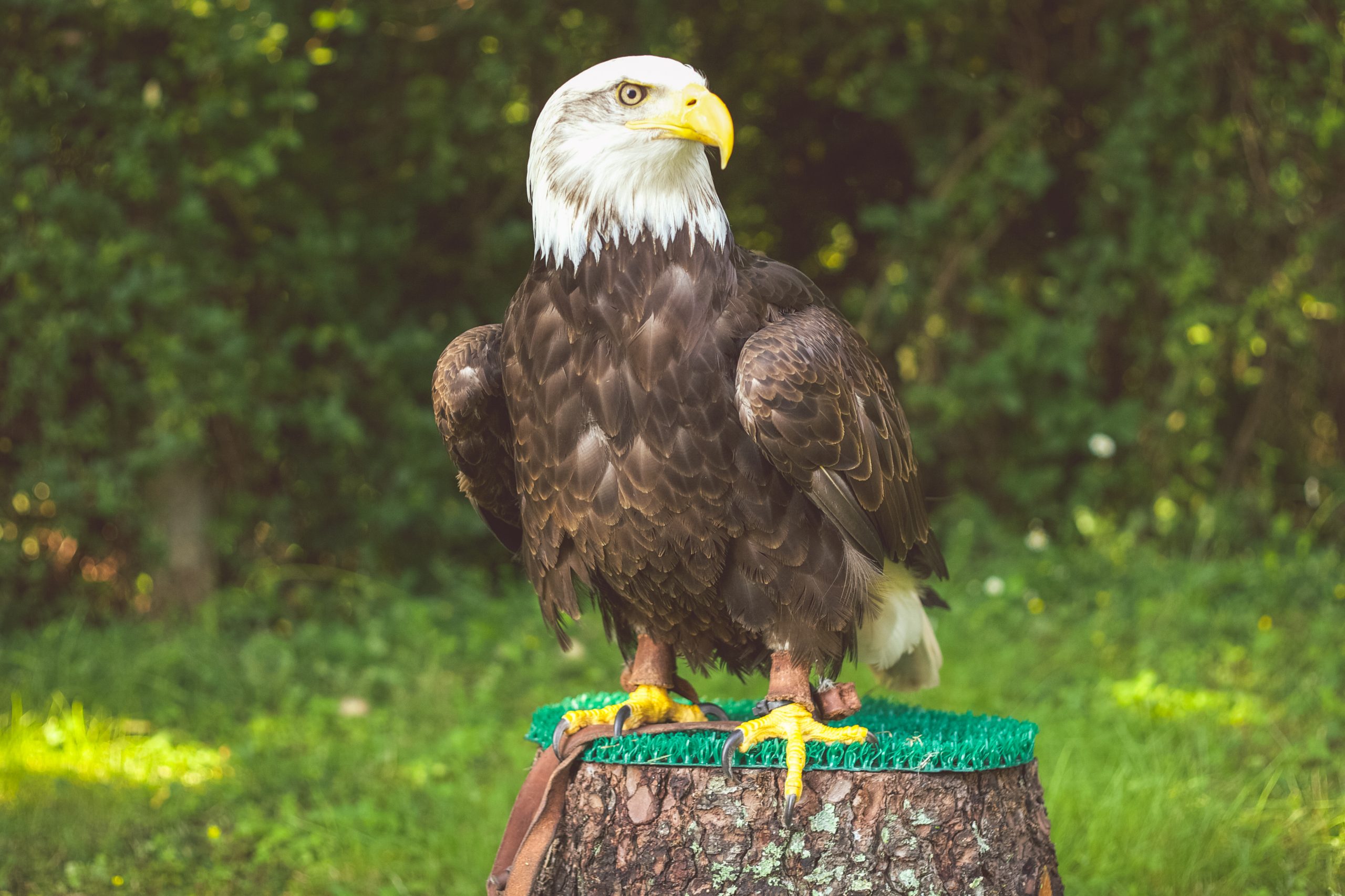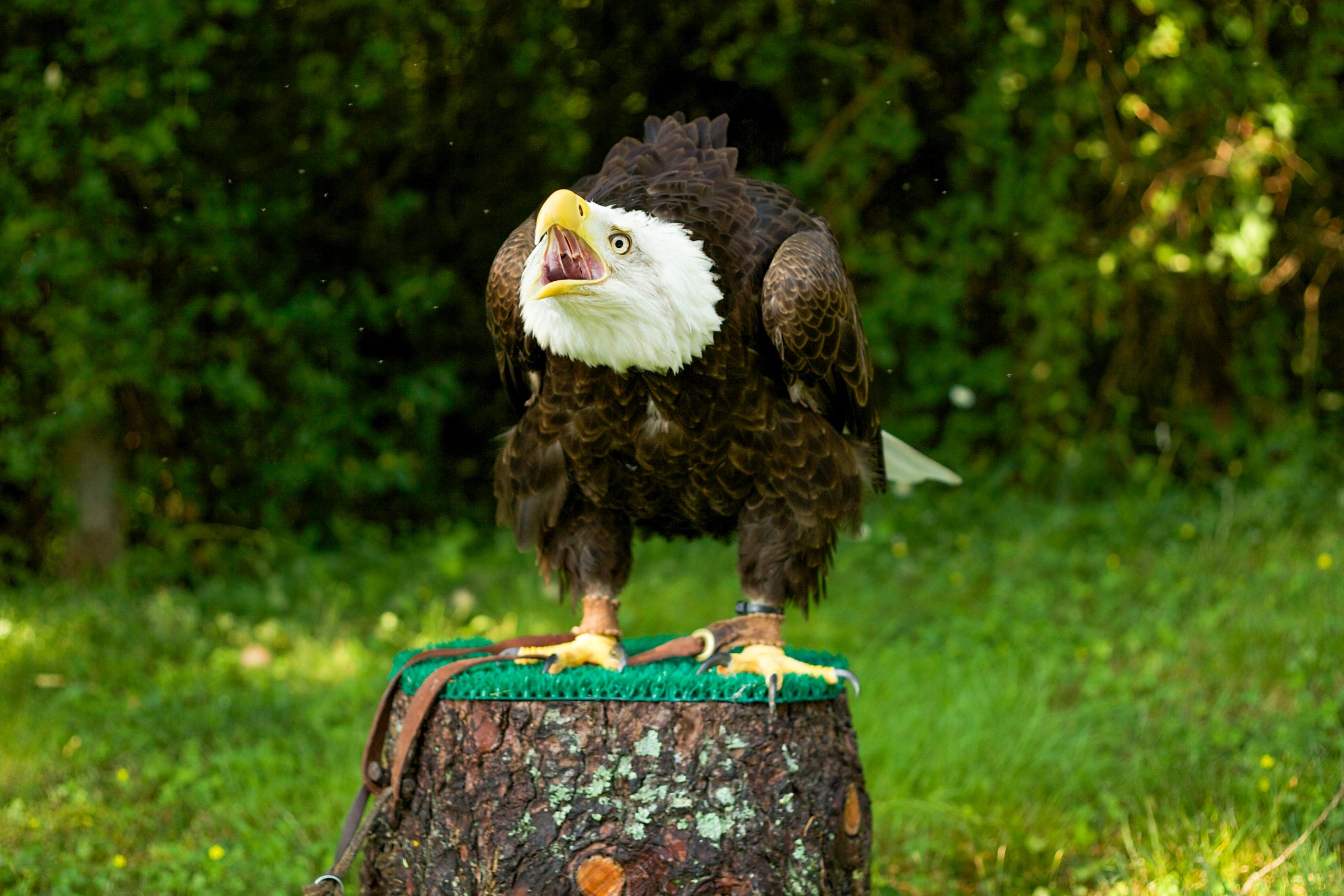MAJESTY
Species: Haliaeetus leucocephalus, Bald Eagle • Hatch Year: 1987 • Sex: Female • Disability: Human Imprint
Majesty came to the American Eagle Foundation in 2007 via FedEx plane from the San Francisco Zoo. She was accompanied by what should have been nine other Bald Eagles, but because her mate passed away before the journey, she only flew here with eight. Majesty was placed into Eagle Mountain Sanctuary at Dollywood and proceeded to choose and pair with a male named ‘Tennessee,’ but he passed away in 2013. Since then Majesty has been trained to become an educational ambassador for her species.
ABOUT THIS SPECIES
Bald Eagles were placed at the center of the Great Seal of the United States in 1782! Since then, they have served as the pride of America’s skies and the symbol of all that America stands for.
Bald Eagles obviously aren’t bald! “Bald” in this sense refers to an Middle English word that means “white headed.” When eagles fledge the nest at between 10 and 13 weeks of age, they are primarily all brown. An Eagle gets its full white head and tail feathers and yellow beak and eyes at around four to five years of age.
Bald Eagles typically mate for life. Usually, they will only look for a new mate if their faithful companion dies, but sometimes a new mate is chosen in a territorial fight over a nest.
In building a nest, Bald Eagles will choose a ‘super-canopy’ tree—one rising above the rest— near to water, with sturdy limbs and a commanding view of the surrounding terrain. Typical nest heights are 50-125 feet high. They make use of twigs, grasses, soft mosses and feathers in making their nests and normally return to the same nest each year during breeding season and add new materials to it. A new eagle pair’s nest usually measures about five feet in width and two feet in depth. As they add to it year after year, however, it can reach widths of over ten feet and weigh up to a ton or more. On the Channel Islands, where large trees are very scarce, Bald Eagles have built their nests on cliffs; and, in some coastal areas of Alaska and Canada where there are few tall trees, Bald Eagles will nest on the ground, using whatever materials are available.




